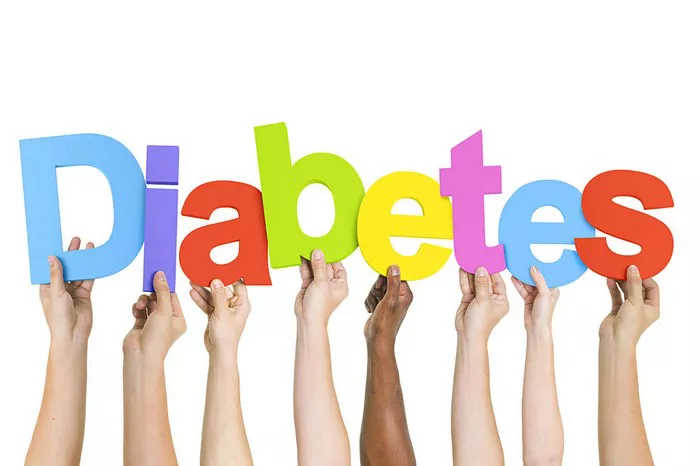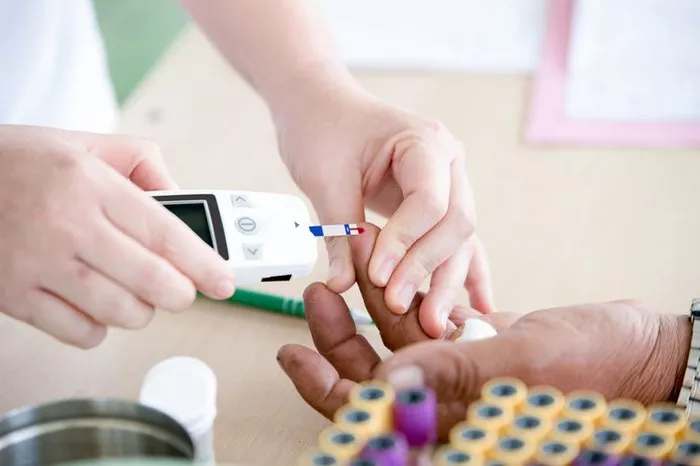Diabetes mellitus, commonly referred to as diabetes, is a chronic metabolic disorder characterized by high blood glucose levels (hyperglycemia) over a prolonged period. This condition arises due to either insufficient insulin production by the pancreas, ineffective use of insulin by the body, or both. Diabetes affects millions of people worldwide and can lead to serious complications if not properly managed. Understanding the different types of diabetes, their causes, symptoms, diagnosis, and treatment options is crucial for effective disease management and prevention of complications.
Types of Diabetes
Diabetes is classified into several types, each with distinct underlying causes and mechanisms:
Type 1 Diabetes
Type 1 diabetes is an autoimmune condition in which the immune system mistakenly attacks and destroys insulin-producing beta cells in the pancreas. This results in an absolute deficiency of insulin, leading to high blood glucose levels. Type 1 diabetes typically develops early in life, often during childhood or adolescence, although it can occur at any age.
Causes
The exact cause of type 1 diabetes is not fully understood, but it is believed to involve a combination of genetic predisposition and environmental factors. Autoimmune destruction of beta cells may be triggered by viral infections or other environmental triggers in genetically susceptible individuals.
Symptoms
Symptoms of type 1 diabetes usually develop rapidly and include:
- Polyuria: Increased urination due to the kidneys trying to eliminate excess glucose from the blood.
- Polydipsia: Excessive thirst as a result of dehydration from polyuria.
- Polyphagia: Increased hunger, despite eating, as cells are starved of glucose.
- Weight loss: Unexplained weight loss despite increased appetite.
Diagnosis
Diagnosis of type 1 diabetes is typically based on clinical symptoms and confirmed by blood tests that show elevated blood glucose levels and presence of autoantibodies against beta cells (such as anti-GAD antibodies).
Treatment
Insulin therapy is the cornerstone of treatment for type 1 diabetes. Patients require regular insulin injections or use of insulin pumps to replace the insulin their bodies are unable to produce. Alongside insulin therapy, proper nutrition, regular physical activity, and monitoring blood glucose levels are essential for managing type 1 diabetes effectively and preventing complications.
Type 2 Diabetes
Type 2 diabetes is characterized by insulin resistance, where the body’s cells become resistant to the effects of insulin, or by relative insulin deficiency due to impaired insulin secretion. Unlike type 1 diabetes, insulin production is initially present but inadequate to meet the body’s needs or is not effectively used by the body.
Causes
Type 2 diabetes has strong links to lifestyle factors such as obesity, physical inactivity, and unhealthy dietary habits. Genetic predisposition also plays a significant role, with certain ethnic groups being more prone to developing type 2 diabetes.
Symptoms
Symptoms of type 2 diabetes may develop gradually and include:
- Polyuria, polydipsia, and polyphagia: Similar to type 1 diabetes.
- Blurred vision: Due to high blood glucose levels affecting the lens of the eye.
- Fatigue: Feeling tired and lethargic despite adequate rest.
- Slow wound healing: High blood glucose levels impair the body’s ability to heal wounds.
Diagnosis
Diagnosis of type 2 diabetes is typically based on blood tests that show elevated fasting blood glucose levels (typically ≥126 mg/dL) or elevated HbA1c levels (typically ≥6.5%). Oral glucose tolerance tests may also be used in certain cases.
Treatment
Treatment of type 2 diabetes focuses on lifestyle modifications, oral medications, and, in some cases, insulin therapy. Lifestyle modifications include adopting a healthy diet, regular physical activity, weight management, and smoking cessation. Oral medications such as metformin, sulfonylureas, DPP-4 inhibitors, SGLT2 inhibitors, and GLP-1 receptor agonists are commonly used to improve insulin sensitivity, promote insulin secretion, or reduce glucose absorption in the intestines.
Gestational Diabetes Mellitus (GDM)
Gestational diabetes mellitus (GDM) is a form of diabetes that develops during pregnancy, typically in the second or third trimester. It is characterized by insulin resistance and impaired glucose tolerance during pregnancy.
Causes
The exact cause of GDM is not fully understood but is believed to involve hormonal changes during pregnancy that can lead to insulin resistance. Women who are overweight or obese before pregnancy, have a family history of diabetes, or are of certain ethnic backgrounds (such as Hispanic, African American, Native American, or Asian) are at higher risk.
Symptoms
Many women with GDM do not experience noticeable symptoms. However, some may experience:
- Increased thirst and urination: Similar to other types of diabetes.
- Fatigue: Feeling tired more than usual.
Diagnosis
Screening for GDM is typically performed between 24-28 weeks of pregnancy using an oral glucose tolerance test (OGTT). If diagnosed, regular monitoring of blood glucose levels and fetal well-being is essential throughout pregnancy.
Treatment
Management of GDM involves dietary changes, physical activity, and, in some cases, insulin therapy to maintain blood glucose levels within target ranges. Controlling GDM is important for reducing the risk of complications for both the mother and the baby, including macrosomia (large birth weight), birth trauma, and neonatal hypoglycemia.
Other Types of Diabetes
Monogenic Diabetes
Monogenic diabetes is a rare form of diabetes caused by mutations in a single gene that affects insulin production or function. These mutations can result in either impaired insulin secretion (Maturity-Onset Diabetes of the Young, MODY) or insulin resistance (e.g., Rabson-Mendenhall syndrome). Monogenic diabetes often presents at a younger age and may not require insulin treatment.
Secondary Diabetes
Secondary diabetes refers to diabetes that develops as a result of another medical condition or medication. Conditions such as pancreatic diseases, hormonal disorders (e.g., Cushing’s syndrome), and certain medications (e.g., corticosteroids) can impair insulin production or increase insulin resistance, leading to secondary diabetes.
Complications of Diabetes
Acute Complications
Diabetic Ketoacidosis (DKA)
DKA is a serious complication of type 1 diabetes characterized by high blood glucose levels, ketosis (accumulation of ketone bodies), and metabolic acidosis. It can be triggered by factors such as infection, missed insulin doses, or other illnesses and requires immediate medical attention.
Hyperosmolar Hyperglycemic State (HHS)
HHS is a life-threatening condition that can occur in type 2 diabetes, characterized by extremely high blood glucose levels and severe dehydration. HHS typically develops more gradually than DKA and is often triggered by infections or other illnesses.
Chronic Complications
Cardiovascular Disease
Diabetes significantly increases the risk of cardiovascular diseases such as coronary artery disease, stroke, and peripheral arterial disease. High blood glucose levels, dyslipidemia (abnormal lipid levels), hypertension, and obesity contribute to this increased risk.
Nephropathy (Diabetic Kidney Disease)
Diabetic nephropathy is a common complication of diabetes and a leading cause of end-stage renal disease (ESRD). Chronic high blood glucose levels and hypertension damage the kidneys’ filtering units (glomeruli), leading to proteinuria (excess protein in urine) and gradual decline in kidney function.
Neuropathy
Diabetic neuropathy refers to nerve damage caused by chronic high blood glucose levels. It can affect nerves throughout the body but commonly affects the feet and legs. Symptoms may include tingling, numbness, burning sensations, and eventually loss of sensation.
Retinopathy
Diabetic retinopathy is a leading cause of blindness in adults and results from damage to the blood vessels of the retina due to chronic high blood glucose levels. It can lead to vision loss if left untreated.
Foot Complications
Diabetes increases the risk of foot complications due to peripheral neuropathy (nerve damage) and impaired circulation. Poor wound healing and infections can lead to foot ulcers, which, if severe, may require amputation.
Other Complications
Diabetes also increases the risk of dental problems, skin conditions, sexual dysfunction, and mental health disorders such as depression.
Prevention and Management
Prevention Strategies
Prevention of diabetes focuses on lifestyle modifications to reduce the risk of developing type 2 diabetes and GDM. Key strategies include:
- Healthy Diet: Emphasizing whole grains, fruits, vegetables, lean proteins, and healthy fats while limiting processed foods, sugary beverages, and excessive calorie intake.
- Physical Activity: Engaging in regular physical activity such as brisk walking, swimming, or cycling for at least 150 minutes per week.
- Weight Management: Achieving and maintaining a healthy weight through diet and exercise reduces the risk of insulin resistance and type 2 diabetes.
- Avoiding Tobacco Use: Smoking increases the risk of diabetes and complicates its management.
Management Strategies
Managing diabetes involves a comprehensive approach aimed at achieving and maintaining optimal blood glucose levels, preventing complications, and improving quality of life. Key components of diabetes management include:
- Blood Glucose Monitoring: Regular self-monitoring of blood glucose levels helps individuals and healthcare providers adjust treatment plans as needed.
- Medication Adherence: Taking prescribed medications as directed, including insulin or oral antidiabetic medications, to achieve target blood glucose levels.
- Healthy Eating: Following a balanced diet that supports blood glucose control, weight management, and overall health.
- Physical Activity: Incorporating regular physical activity into daily routines to improve insulin sensitivity and cardiovascular health.
- Regular Medical Check-ups: Monitoring for complications of diabetes and addressing any emerging health issues promptly.
Diabetes Education and Support
Diabetes education plays a crucial role in empowering individuals to manage their condition effectively. Education programs provide information on self-care practices, medication use, nutrition, physical activity, monitoring blood glucose levels, and recognizing symptoms of complications. Support from healthcare providers, diabetes educators, and support groups can help individuals navigate the challenges of living with diabetes and achieve long-term health goals.
See also: What are Blood Sugar Levels in Type 1 Diabetes
Conclusion
Diabetes is a complex chronic illness that requires lifelong management to prevent complications and maintain overall health and well-being. Understanding the different types of diabetes, their causes, symptoms, and treatment options is essential for healthcare providers and individuals affected by diabetes. By focusing on prevention strategies, early diagnosis, and comprehensive management, we can reduce the burden of diabetes and improve outcomes for millions of people worldwide. Ongoing research and advancements in diabetes care continue to enhance our understanding and treatment options, offering hope for a future where diabetes management is more effective and accessible.
Related topics:



























